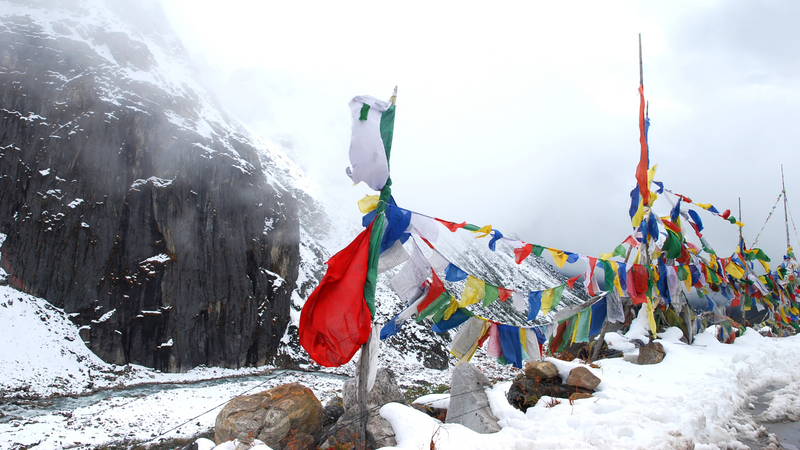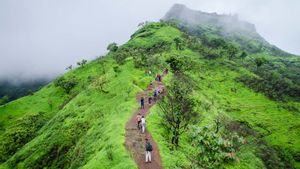Northeastern India's Sikkim state is bordered by Nepal, Tibet, and Bhutan. The state is renowned for its breathtaking natural beauty, varied culture, and extensive history. The Yumthang Valley, which lies in the North Sikkim district, is one of the most visited places in Sikkim.
For those who love the great outdoors, Yumthang Valley is a wonderland. At a height of 3,500 metres above sea level, the valley is encircled by snow-capped mountains, lush green woods, and glistening rivers. Due to the extensive variety of flowers that bloom here in the spring and summer, the valley is often referred to as the "Valley of Flowers." The valley is a well-liked location for botanists and flower lovers because it is home to over 24 species of rhododendrons.
Yumthang Valley is home to various hot springs, which, in addition to the breathtaking natural beauty, are thought to have therapeutic qualities. Tourists frequent the hot springs to unwind and revitalise in the waters' abundance of minerals.
Adventurers can choose from a number of hiking routes in Yumthang Valley that take them to some of the most beautiful Himalayan vistas. The Yumthang Valley hike, which traverses deep forests, open meadows, and several streams and waterfalls, is the most well-known in the region. The moderately difficult journey is appropriate for both novice and seasoned hikers.
There are a number of little settlements in Yumthang Valley where you can get a feel for the native way of life and culture. One such settlement that is close to the valley is the Lachung village. The village is renowned for its conventional construction methods, vibrant prayer flags, and kind welcome. The Lachung Monastery, one of Sikkim's oldest monasteries, is another place you can go.
How to reach
The closest airport to Yumthang Valley is Bagdogra Airport, which is around 125 kilometres away. From there, you can take a flight to get there. Lachung, the town closest to Yumthang Valley, may be reached from the airport by shared or hired taxi. To go to the valley from Lachung, you can either take a private or shared taxi.
The closest train station to Yumthang Valley is New Jalpaiguri Railway Station, which is about 160 kilometres away if you want to travel by train. You can take a shared cab or a taxi from the train station to Lachung, and then a taxi or a shared cab to Yumthang Valley.

Best time to visit Yumthang Valley
The spring season, from March to June, is the greatest time to visit Yumthang Valley since then the valley is in full bloom with vibrant flowers like primulas, rhododendrons, and poppies. With temperatures ranging from 10 to 20 degrees Celsius, the weather is also pleasant during this time.
If you enjoy winter sports, you may want to consider planning a trip to Yumthang Valley during the winter months of December through February. During this time, the valley is completely covered in snow, allowing you to participate in activities like snowboarding and skiing. However, because it might get very cold during this period, it's advised to have warm clothing and equipment with you.
7 places in Yumthang Valley that are worth visiting
1. Yumthang Hot Springs
If you're wanting to unwind and refresh, head to Yumthang hot springs. Due to the presence of minerals in the water, the hot springs are considered to have medicinal effects.
Best time to visit: The greatest time to visit Yumthang Hot Springs is in the spring, between March and June when the weather is nice and the valley is abundant with vibrant flowers.
Timings: The hot springs are open from 6:00 AM to 6:00 PM, and guests are welcome to take a plunge in the warm water, which is thought to have medicinal qualities.
Location: About 135 kilometres from Gangtok, in North Sikkim, is where you'll find Yumthang Hot Springs. The hot springs are a well-liked destination for outdoor enthusiasts and nature lovers since they are close to the Yumthang River and are surrounded by verdant vegetation and snow-capped mountains. Visitors must make a journey from the main road to Yumthang Hot Springs, which takes around 15-20 minutes.
2. Yumthang Valley Trek
The Yumthang Valley Trek is a moderate hike that takes you past multiple streams and waterfalls as well as through dense forests and rolling meadows. The trek is a wonderful way to discover the beauty of the valley and gives breathtaking views of the Himalayas.
3. Shingba Rhododendron Sanctuary
For those who love the outdoors, a trip to the Shingba Rhododendron Sanctuary is a must. More than 24 different varieties of rhododendrons may be found in the sanctuary, and during the spring and summer, they blossom in a riot of colour.
The best time to visit: The best time to visit Shingba Rhododendron Sanctuary is from April to June when the rhododendrons are in full bloom and the valley is covered in hues of red, pink, and white that resemble those in paintings.
Timings: The sanctuary is open from six in the morning to six in the evening, and entry requires a permit from the forest department.
Location: North Sikkim's Shingba Rhododendron Sanctuary is situated there, 137 kilometres or so from Gangtok. From Gangtok, visitors can take a taxi or a shared jeep to the sanctuary. A five to six-hour trip through lovely towns and countryside is required to reach the refuge. Visitors should drive carefully as the roads leading to the sanctuary are curvy and narrow.

4. Lachung Monastery
Situated close to the Yumthang Valley, the Lachung Monastery is one of Sikkim's oldest monasteries. The monastery is well-known for its elaborate design and vibrant prayer flags.
How to reach: Visitors can take a cab or shared jeep from Gangtok to the Lachung Monastery,
Best time to visit: The best months to go are March through June and September through December.
Timings: The monastery is open from 6:00 AM to 6:00 PM.
5. Yumesamdong
Also known as Zero Point, is the terminus of the road in Yumthang Valley. Yumesamdong is also known as Zero Point. Winding roads and breathtaking vistas of snow-capped mountains make the trip to Zero Point an exhilarating experience. The region is a great place for skiing and snowboarding because it is blanketed in snow for the majority of the year.
Best Time To Visit: From November to February, when the entire region is covered in snow and the scenery appears ethereal, is the greatest time to visit Yumesamdong. Visitors are encouraged to bring warm clothing and blankets because the temperature decreases dramatically during these months.
Timings: Yumesamdong is open Monday through Friday from 8:00 AM to 5:00 PM.
How To Get There: Around 150 kilometres separate Yumesamdong from Gangtok, and travellers can get there by hiring a cab or riding in a shared jeep. Yumesamdong is a bit of a challenge to get to because the route is small and steep, but the breathtaking views of the valleys and mountains covered with snow are well worth the trouble. Due to landslides and intense rain, the route to Yumesamdong is permanently closed from July to September.

6. Kala Patthar
Kala Patthar is a tiny hillock close to Yumthang Valley that provides breathtaking views of the mountains and valleys in the area. Since it provides beautiful views of the snow-capped peaks and the lush green forests, the location is a favourite among photographers and environment enthusiasts. The greatest time to go to Kala Patthar is in the winter when it is completely covered in snow and has a strange appearance. Adventure seekers love the trek to Kala Patthar because it passes through beautiful scenery and provides an unforgettable experience.
7. Chungthang
Around 30 kilometres from Yumthang Valley, where both the Lachen and Lachung rivers meet, is a little town called Chungthang. Since Guru Rinpoche, the founder of Tibetan Buddhism, is thought to have been born in this town, it is well renowned for both its natural beauty and its significance in terms of religion. The Teesta River, which flows through Sikkim and West Bengal, is formed at the Chungthang Confluence, which is located in the town. The confluence, which offers breathtaking views of the surrounding mountains and the river, is a well-liked location for picnics and relaxation. The Chungthang Monastery, one of Sikkim's oldest and most significant monasteries, is another place you can go. The monastery is a must-see location for visitors interested in Sikkim's rich religious and cultural legacy because of its distinctive architecture, colourful prayer flags, and peaceful atmosphere.
Sikkim is home to many famous monasteries that you must visit at least once. Don’t fret if you’re a vegetarian, contrary to popular belief, Sikkim is home to a lot of vegetarian food options you must try.
Disclaimer: The details mentioned throughout this blog are sourced from publicly accessible platforms. At Zeezest, we intend to share factual and verified information. Should there be any inconsistencies or variances in the information provided, please understand that these are entirely unintentional and not meant to mislead.


_1682326260554_thumb_1200.png?w=3840&q=75)
_1681287093320_thumb_300.png)
